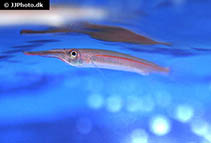http://www.fishbase.org/Summary/speciesSummary.php?genusname=Hemirhamphodon&speciesname=kapuasensis ---> http://52.67.158.155/Summary/speciesSummary.php?genusname=Hemirhamphodon&speciesname=kapuasensis
http://52.67.158.155/Summary/speciesSummary.php?genusname=Hemirhamphodon&speciesname=kapuasensis ---> https://fishbase.net.br/Summary/speciesSummary.php?genusname=Hemirhamphodon&speciesname=kapuasensis
https://fishbase.net.br/Summary/speciesSummary.php?genusname=Hemirhamphodon&speciesname=kapuasensis ---> https://fishbase.net.br/summary/Hemirhamphodon-kapuasensis.html
Hemirhamphodon kapuasensis

You can
sponsor
this page
Common name (e.g. trout)
Genus + Species (e.g. Gadus morhua)
-

-
About this page
-
Languages
-
User feedbacks
-
Citation
-
Uploads
-
Related species
-


 Upload your
photos
and
videos
Upload your
photos
and
videos
Pictures
|
Google image
 Hemirhamphodon kapuasensis
Hemirhamphodon kapuasensis
Picture by
JJPhoto
Teleostei (teleosts) >
Beloniformes
(Needle fishes) >
Zenarchopteridae
(Internally fertilized halfbeaks)
Etymology:
Hemirhamphodon:
Greek, hemi = half + Greek, rhamphos = bill + greek, odous = teeth (Ref.
45335
)
;
kapuasensis:
Named for the Kapuas River to which it is endemic.
.
Environment: milieu / climate zone / depth range / distribution range
Ecology
Freshwater; brackish; pelagic; depth range 0 - ? m. Tropical
Asia: Indonesia.
Size / Weight / Age
Maturity: L
m
?
range ? - ? cm
Max length : 5.0 cm SL male/unsexed; (Ref.
7050
)
Short description
Morphology
|
Morphometrics
Can be distinguished by a combination of the posterior location of the anal fin origin, under dorsal-fin rays 8-11, a moderately high number of dorsal fin rays (18-21) with low numbers of vertebrae (38-40) and predorsal scales (35-43) (Ref.
26761
).
Females bear live young (Ref.
58777
).
Life cycle and mating behavior
Maturity
|
Reproduction
|
Spawning
|
Eggs
|
Fecundity
|
Larvae
Anderson, W.D. III and B.B. Collette
, 1991. Revision of the freshwater viviparous halfbeaks of the genus
Hemirhamphodon
(Teleostei: Hemiramphidae). Ichthyol. Explor. Freshwat. 2(2):151-176. (Ref.
26761
)
IUCN Red List Status (Ref.
130435
)
Least Concern (LC)
; Date assessed:
14 January 2020
CITES
Not Evaluated
Not Evaluated
Threat to humans
Harmless
Human uses
FAO - Publication:
search
|
FishSource
|
More information
Countries
FAO areas
Ecosystems
Occurrences
Introductions
Stocks
Ecology
Diet
Food items
Food consumption
Ration
Common names
Synonyms
Metabolism
Predators
Ecotoxicology
Reproduction
Maturity
Spawning
Spawning aggregation
Fecundity
Eggs
Egg development
Age/Size
Growth
Length-weight
Length-length
Length-frequencies
Morphometrics
Morphology
Larvae
Larval dynamics
Recruitment
Abundance
BRUVS
References
Aquaculture
Aquaculture profile
Strains
Genetics
Electrophoreses
Heritability
Diseases
Processing
Nutrients
Mass conversion
Collaborators
Pictures
Stamps, Coins Misc.
Sounds
Ciguatera
Speed
Swim. type
Gill area
Otoliths
Brains
Vision
Tools
E-book
|
Field guide
|
Length-frequency wizard
|
Life-history tool
|
Point map
|
Classification Tree
|
Catch-MSY
|
Special reports
Check for Aquarium maintenance
|
Check for Species Fact Sheets
|
Check for Aquaculture Fact Sheets
Download XML
Summary page
|
Point data
|
Common names
|
Photos
Internet sources
AFORO (otoliths) |
Aquatic Commons
|
BHL
|
Cloffa
|
BOLDSystems
|
Websites from users
|
Check FishWatcher
|
CISTI
|
Catalog of Fishes
:
genus
,
species
|
DiscoverLife
|
ECOTOX
| FAO - Publication:
search
|
Faunafri
| Fishipedia |
Fishtrace
| GenBank:
genome
,
nucleotide
| GloBI |
Google Books
|
Google Scholar
|
Google
| IGFA World Record |
MitoFish
|
Otolith Atlas of Taiwan Fishes
|
PubMed
| Reef Life Survey | Socotra Atlas |
Tree of Life
| Wikipedia:
Go
,
Search
| World Records Freshwater Fishing |
Zoobank
|
Zoological Record
Estimates based on models
Phylogenetic diversity index (Ref.
82804
): PD
50
= 0.5020 [Uniqueness, from 0.5 = low to 2.0 = high].
Bayesian length-weight: a=0.00457 (0.00200 - 0.01044), b=3.03 (2.83 - 3.23), in cm total length, based on LWR estimates for this (Sub)family-body shape (Ref.
93245
).
Trophic level (Ref.
69278
): 3.1 ±0.4 se; based on size and trophs of closest relatives
Fishing Vulnerability (Ref.
59153
): Low vulnerability (10 of 100).
Back to Search
Random Species
Back to Top
Accessed through:
Not available
FishBase mirror site :
Laguna, Philippines
Page last modified by :
mrius-barile
|